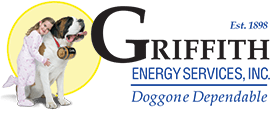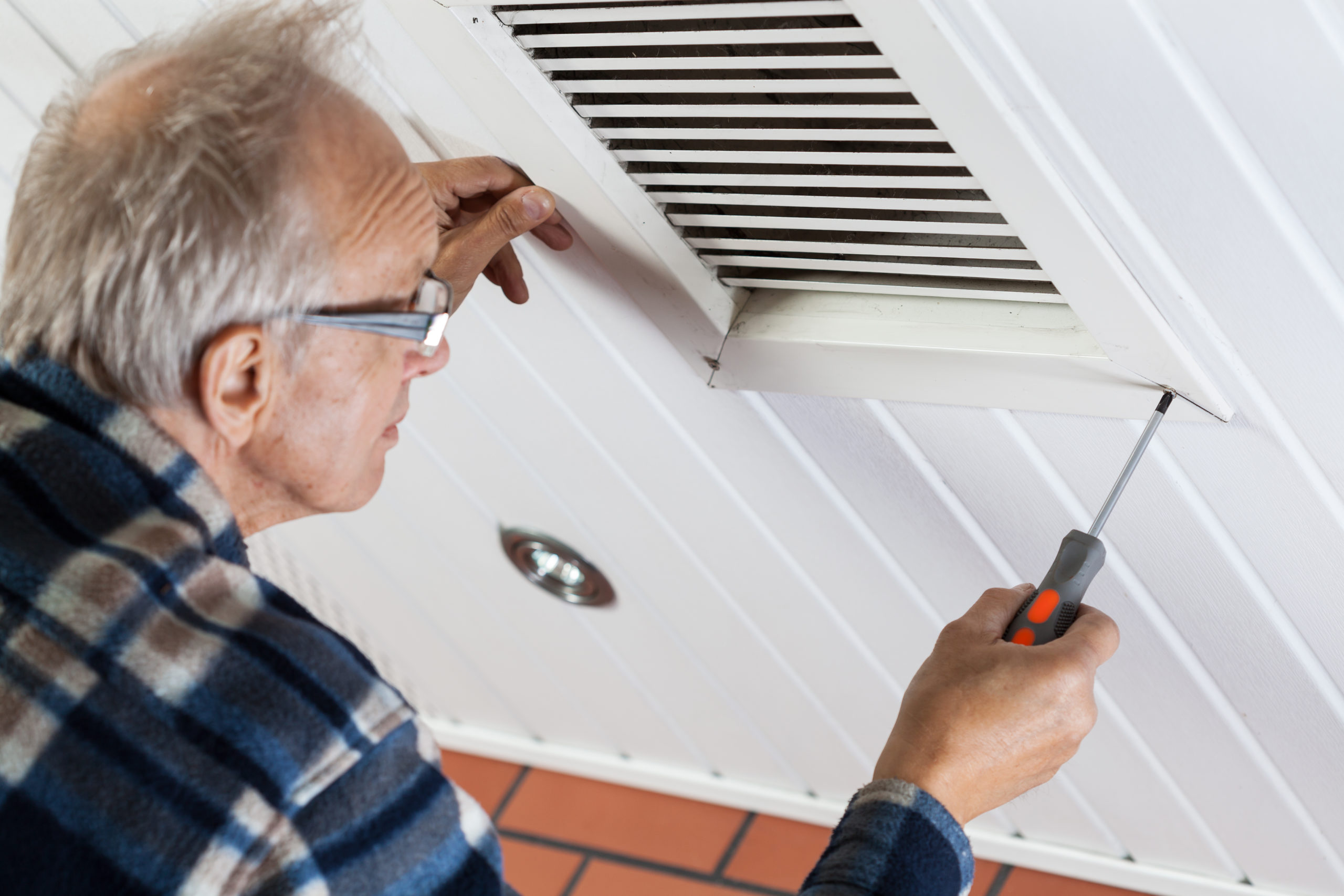Evaluating the energy efficiency of your Maryland home may not be high on your to-do list, but you might be surprised at how easy the process is. A proper energy evaluation can uncover energy losses, make you aware of inefficient appliances, indicate much-needed repairs or replacements, and give you peace of mind. Even better, boosting your home’s efficiency after an energy evaluation can cut your overall utility bill.
The Home Energy Assessment
A professional home energy evaluation is a thorough energy assessment, but you can easily conduct your own evaluation to find areas that need to be improved. The assessment is a simple walk-through of your home, but you must be diligent, so dedicate an afternoon or weekend to the task.
Locate Air Leaks
The first task you want to do is locate air leaks. These leaks can be obvious drafts you’ve felt around the house, but they can also be tiny cracks around baseboards, electrical outlets, fireplace dampers, attic hatches, windows, and foundation seals.
The easiest method of locating air leaks is to close all windows, doors, and fireplace flues. Turn off your water heater and any other combustion appliance as well as exhaust fans. You want to cut off these types of air flows so you can locate the ones you don’t want.
Once you’ve prepped your home, use incense sticks to find leaks by holding them up to potential problem areas. If the smoke wavers or is sucked into anything, you’ve found an air leak. Take note of these areas and work on sealing them after you’ve finished your home energy evaluation. When sealing these leaks, be mindful of backdrafting, a situation when exhaust fans and appliances compete for air and send exhaust back into the living space.
Check and Replace Lighting
Examining your lightbulb wattage is easy. If you tend to use 100-watt bulbs throughout the house, try switching to 60 or 75 watts. Compact fluorescent bulbs and LEDs are more energy-efficient alternatives. These bulbs not only last longer, but they can also reduce your electric bill.
Keep in mind, however, that CFL bulbs require proper disposal after they’re spent due to the trace amounts of mercury used in their construction. Recycle them properly according to your area’s regulations.
Inspect Insulation
In older homes, the required amount of insulation installed was much less than today’s standards, which could mean your home’s insulation is lacking. Insulation can also break down and leave gaps, resulting in energy loss.
To combat this energy loss, check that your attic space is properly insulated, including the hatch. If your attic lacks a vapor barrier, paint all interior walls with a vapor barrier paint, which reduces the amount of water vapor passing through the ceiling. In the basement, you’ll want to verify that you have a proper amount of insulation on the foundation wall, ductwork, hot water pipes, and around your water heater.
To check the insulation in the walls, turn off the circuit breaker for that exterior section and remove the cover plate from an outlet. You can then probe into the wall with a screwdriver, feeling for any slight resistance that indicates insulation present. If you don’t feel this resistance, you probably need more insulation.
While this method of checking for insulation on exterior walls is a good start, the process can’t test beyond the outlet area. You will need a thermographic inspection to verify your findings.
Inspect Your HVAC System
Every HVAC system should be inspected annually to check for defaults and to carry out any preventative maintenance. Professional HVAC inspections are the most thorough, but you can check your system, especially during seasons when your HVAC system is used the most.
Check your HVAC filters and replace or clean them every 90 days. Consider switching to newer high-efficiency filters if you haven’t already. Pay attention to dirt streaks in your ductwork, which can indicate air leaks. If you prefer, use a pressurized duct blaster device to uncover air leaks through pressure loss. Seal any ductwork air leaks with a duct mastic and insulate any pipes or ducts that need it. Get a new air conditioning unit installed by professionals, if necessary.
Check All Doors and Windows
Most of the energy in our homes escape via the windows, so you’ll want to check these areas for energy efficiency and air-tightness. Replacing old windows with newer, energy-efficient ones can drastically reduce your utility bill, but be sure that your windows open and close smoothly regardless of how old the windows are.
If you discover air escaping through doors, you may need to adjust them at the hinges to make the seal tighter. The best way to check for this air escape is with the incense stick test.
Evaluate Large Appliances
Countless online home energy calculators can help you calculate how much energy your washing machine, refrigerator, freezer, dishwasher, lighting system, and other appliances are using. Auditing your own appliances takes time and thought, so many homeowners prefer enlisting the help of professional HVAC services, but the task isn’t impossible to do yourself.
If you discover that an appliance is wasting energy, consider proper maintenance. You should also consider upgrading to an energy-efficient model that will also allow you to take advantage of energy tax credits.
Clean and Clear Around Outdoor HVAC Units
Outdoor HVAC condenser units are susceptible to dirt, debris, and weeds. You should keep plants, obstructions, and grass clippings free from the HVAC unit, so sweep the concrete pad weekly and clean the condenser once a month while it’s in use.
Vacuum away debris or hose off the condenser with moderate water pressure from the inside out. Make sure the interior fan and coils are clean as well.
Instant Energy Savings
Now that you’ve reviewed the basics of the home energy assessment, start implementing simple steps that can begin reducing your energy consumption immediately. These steps can include the following:
- Programming your AC thermostat
- Using smart power strips
- Installing low-flow showerheads
- Switching to LED or CFL light bulbs
- Insulating pipes and water heaters
- Adjusting your hot water temperature
All of these are no-cost or low-cost changes you can make now, boosting your home’s energy efficiency with little effort.
Implementing Renewable Energy Technologies
Although more costly, implementing renewable energy technologies in your home will improve your home’s energy efficiency even more, reducing your overall energy costs by a wide margin. One of the first steps people take is purchasing a few solar panels. Solar energy can provide your home with electricity, but most homes will require multiple solar panels to run on renewable energy alone. Even so, adding solar panels to use with your existing utilities will lower your energy consumption.
Other alternative energy choices include wind technology, through a wind turbine, and geothermal energy, which uses hot water to conduct electricity. If you’re already in the market for alternative energy solutions, conduct a home energy assessment before making any installations so you don’t lose any of the energy produced.
Turn to the Professionals
At Griffith Energy Services Inc., we’re dedicated to your home’s energy efficiency and indoor air quality. Our knowledgeable technicians can perform a more in-depth energy assessment on your home, spotting miniscule problems that may otherwise be overlooked.
For homeowners experienced in performing their own home energy audits, it’s important to know when to turn to professionals after spotting a problem. Our preventative maintenance and repair services will ensure your HVAC system is running in excellent shape, improving the overall efficiency of your home.
You should aim to have a professional tune-up of your AC every year, preferably before summer, to make sure your unit passes our 28-point inspection checklist. If you own a newer model AC unit, the warranty may require regular professional maintenance, which is not something you can handle on your own.
Call Griffith Energy Services Inc. today at 888-474-3391 for more information on our home energy-saving products and services. We’ll help you achieve the energy-efficient home that you deserve.
Image provided by Shutterstock




